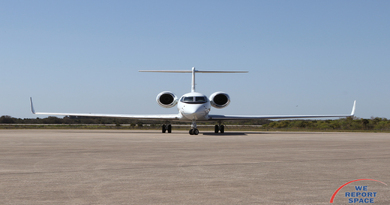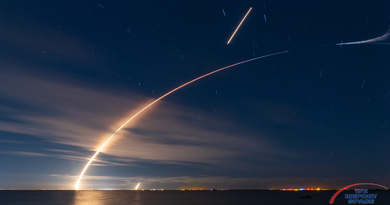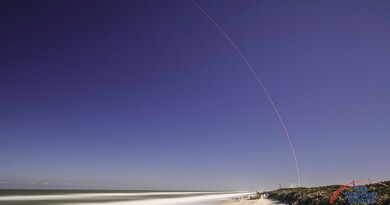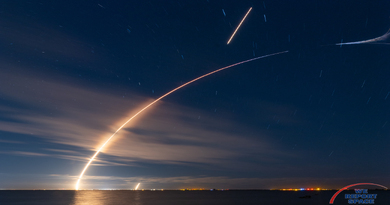AFSPC-6: Delta IV Medium Launches a Pair of Neighborhood Watch Satellites
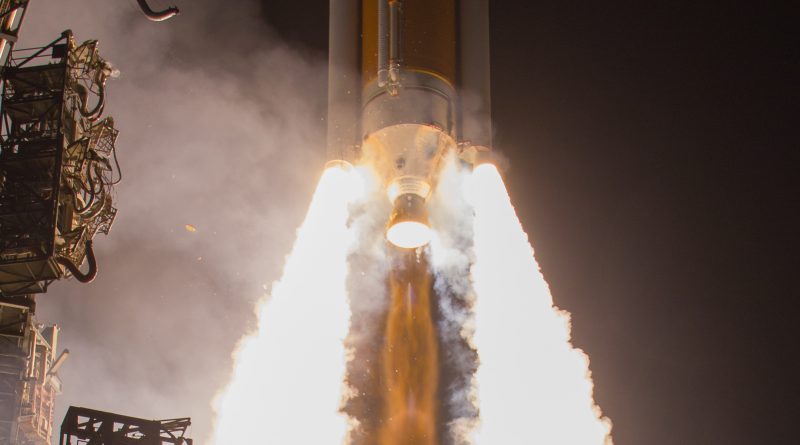
August 19, 2016 CAPE CANAVERAL: The night launch of AFSPC-6 atop a Delta IV Medium at 12:52 AM provided a visual treat for Space Coast residents willing to brave a humid and mosquito-filled night launch. The payload were a pair of Geosynchronous Space Situational Awareness Program (GSSAP) satellites to be used by Air Force Space Command to keep watch over US Satellites and to serve as a deterrent to international attacks against those satellites.
This is the second launch of GSSAP spacecraft by the Air Force Space Command. The rocket flew on a Delta-IV Medium+ (4,2) configuration with two solid rocket boosters (SRB) attached to the side of the main core. The SRBs burned for 93.8 seconds and provided an additional 517,085 pounds of thrust at liftoff. The main core then continued to burn until T+3:57. The second stage ignited at T+4:19 and the story ends there. Due to the secret nature of the launch, the Air Force provided no details after second stage ignition.
Mission Art
The mission patches and logos alluded to the secrecy. The logo on the payload faring included the Latin phrase Videmus Omni - We See All. The patch from the 45th Space Wing shows a pair of blindfolded figures with the Latin phrase Oculi Nostri Nisi or Our Eyes, Except.
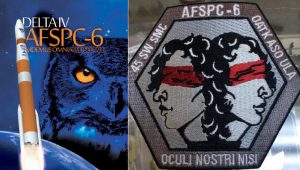
Remote Camera Setup
Media were to convene at 3:30 PM on August 18, 2016 to convoy to the pad for Remote Camera Setup. We were supposed to have an hour at Pad 37. This is a beautiful pad, with several retention ponds that provide nice reflections of the launch. Various media outlets choose to set up beyond the far pond, to the side of the rocket, or in front of the near pond. Since the media have to stay within eyesight of our ULA escorts, it was taking forever for people to set up. An hour was turning into two hours. We Report Space was represented by Mike Seeley (one remote to the side of the rocket) and Bill Jelen (one remote in front of the near pond). Both of our cameras were set and we had already bored ourselves with our usual session of cracking wise. I was calling home to delay dinner, whining about people who were still setting up cameras nearly two hours into the process. Suddenly, the Mobile Service Tower began rolling back.
Rolling the Building Away
Each launch company has a different way of getting the rocket to the pad. NASA would stack the Shuttle on a massive Crawler-Transporter and slowly drive the rocket to the pad. The Atlas is built on a mobile launch platform. On launch day, the mobile launch platform rides on trail rails in to place on the pad. SpaceX builds their rocket horizontally, rolls it to the pad, and then lifts the rocket into vertical position. The Delta, though, is a completely different system. The rocket is stacked at the pad. A tall building surrounds the rocket, providing levels for people to work on the rocket. On launch day, the rocket stays put and the building rolls away. I've seen this from afar, and it was a bucket-list item to see it up close. I imagined the act of rolling away a 33-story building had to be loud. But it is not. It is silent. It is awe-inspiring and amazing to watch from the base of the hill.
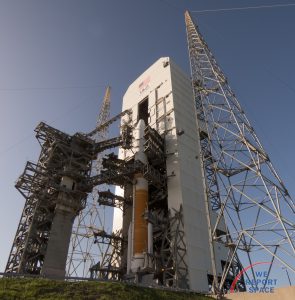
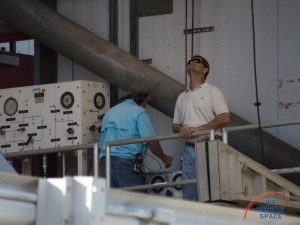
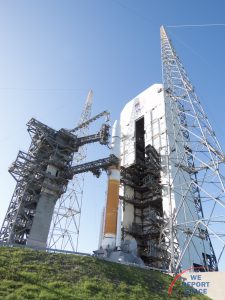
Battling Dew
Although our Senior Photo Editor Jared Haworth did not attend this launch, he provided a key role. After Dew had obscured our remote cameras for the SpaceX JCSat launch last week, Jared rushed a pair of his homr-grown dew heaters to Florida of for the launch. These heaters strap around the lens and are timed to turn on for 20 minutes before the start of the launch window. They did their job as both cameras stayed dew-free.
Mike Seeley's remote captured this shot of the exhaust from the boosters and main core:
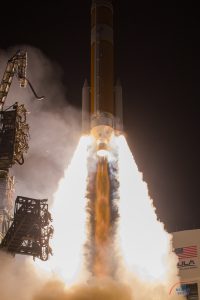
Watching the Launch
Although our remote cameras were 125 feet from the base of the rocket, no people would be allowed in that safety zone. Media were stationed on the north end of the ITL Causeway, about 1.6 miles from the launch pad. Here is Mike Seeley's telephoto shot from 1.6 miles away:
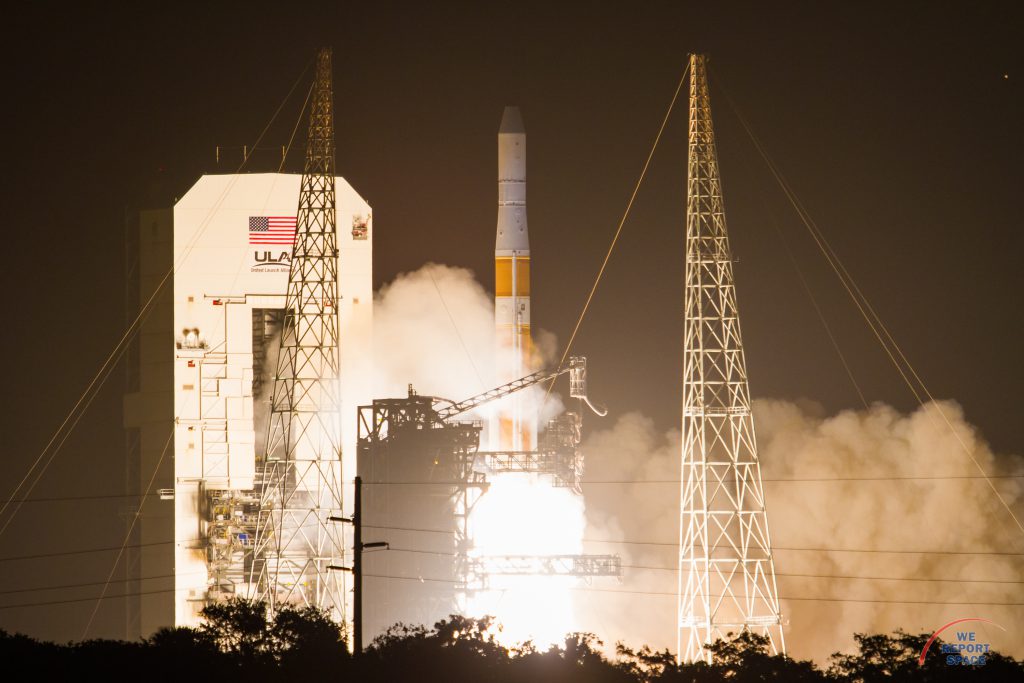
Night-launches are a great opportunity for capturing a long-exposure streak shot. Here is one such shot from the WRS team:
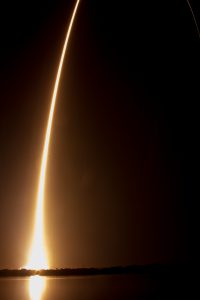

Stunning, full color photo book covering every east coast launch spanning 2014-2015, including the first-ever powered landing of a SpaceX Falcon 9 rocket.
More Info
